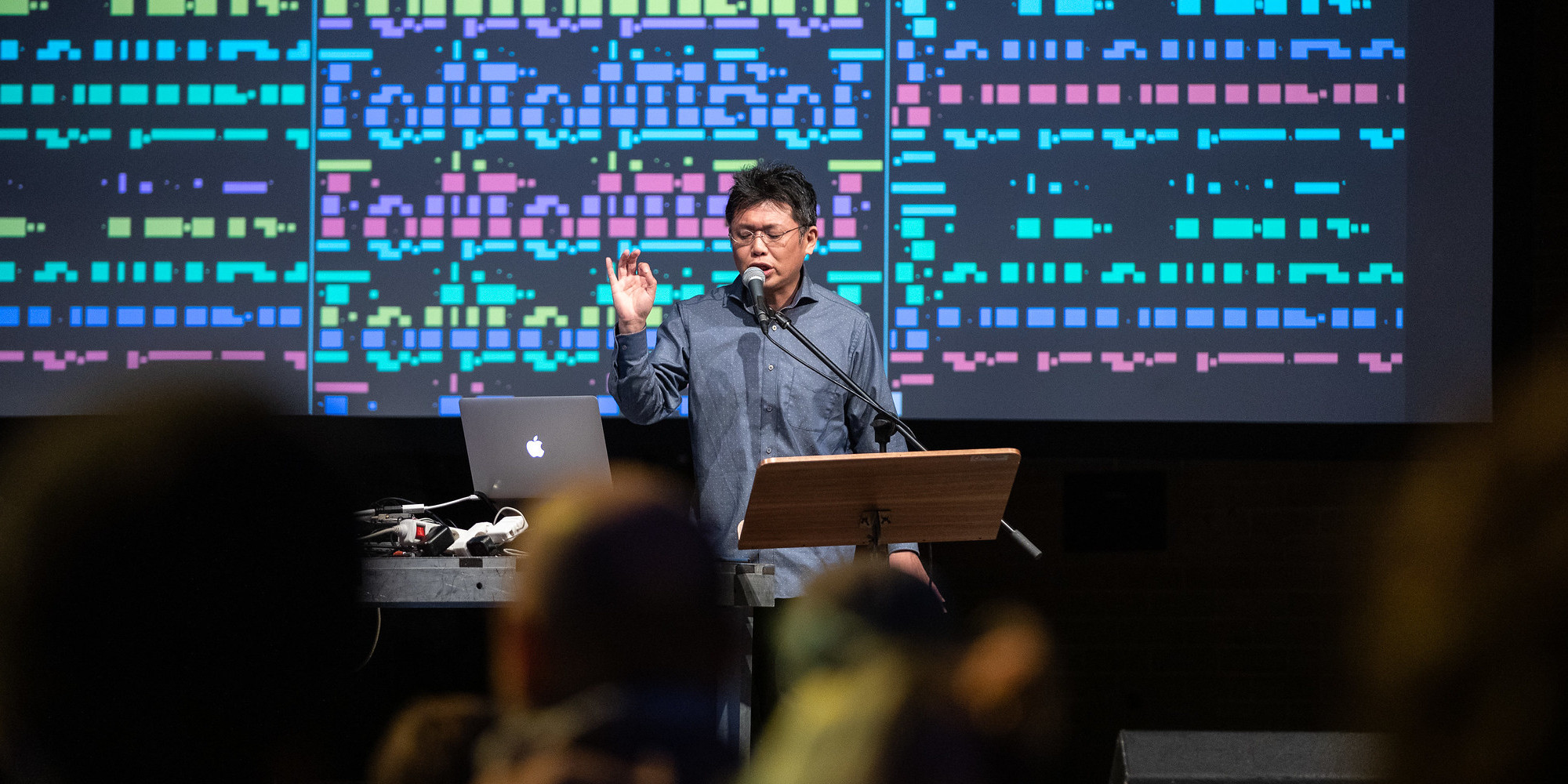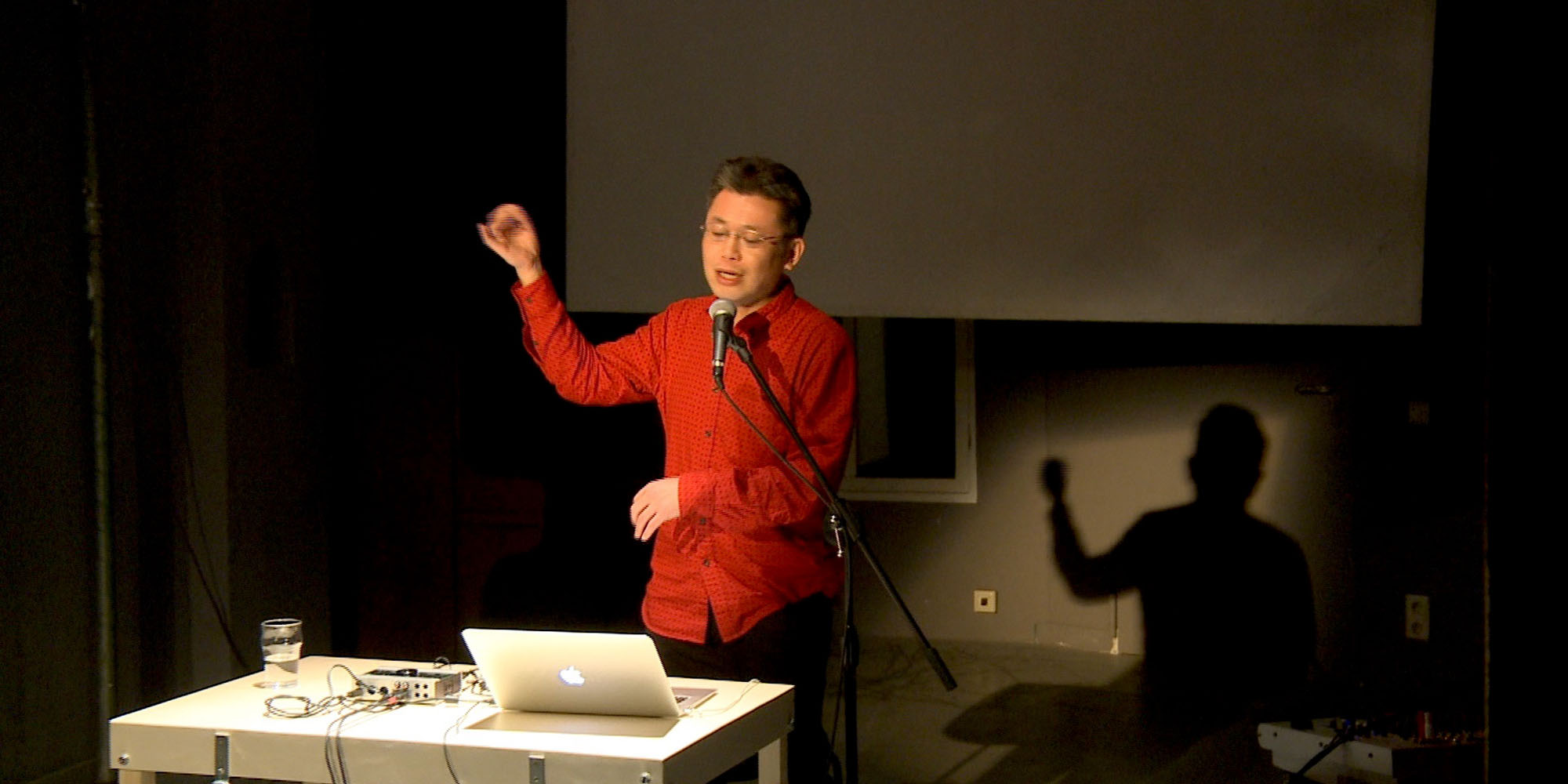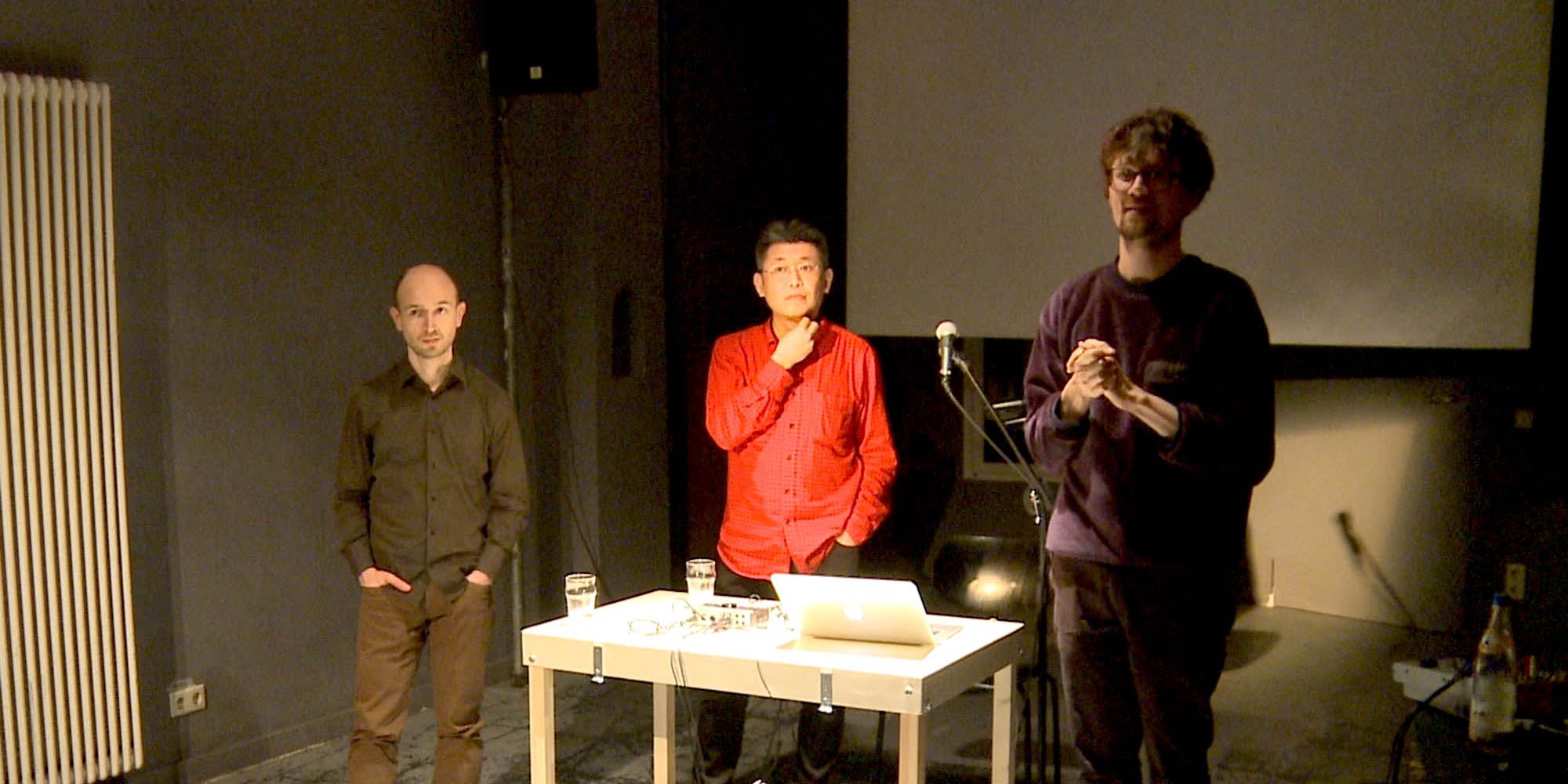Voices from AI in Experimental Improvisation is an attempt to improvise and interact with a computer software which “learns” about the performer’s voice and musical behavior. The program named “tomomibot” is based on artificial intelligence (AI) algorithms and enables a voice performer, Tomomi Adachi (human), to perform with his AI learning independently over time from his past performances.
The project is not only a musical experiment with a non-human performer, but also an undertaking to make computer culture “audible.” The performance raises questions about the logic and politics of computers in relation to human culture.
“tomomibot” is a software based on a sequential neural network. It decides which sound to play next based on which live sounds it has heard before. The software was designed and developed by Andreas Dzialocha. Experimenting with AI sound synthesis algorithms, the developer Marcello Lussana generated a large database of sounds that sound like Adachi.
Project Credits:
- This project is supported by Musikfonds e.V. in 2019 and the Initiative Neue Musik Berlin e.V. in 2018.
Biographies:
Tomomi Adachi is a performer/composer, sound poet, instrument builder and visual artist. Known for his versatile style, he has performed his voice and electronics pieces, sound poetry, improvised music and contemporary music in site-specific compositions, classical ensembles and groups of untrained musicians.
Andreas Dzialocha is an artist and developer. His work consists of digital and physical environments, spaces, festivals or software for participants and listeners. The computer itself serves as an artistic, political, social or philosophical medium.
Marcello Lussana combines music, philosophy and technology, particularly the interaction between music and human movement, where body and computer are connected through a complex understanding of body perception and interfaces.




